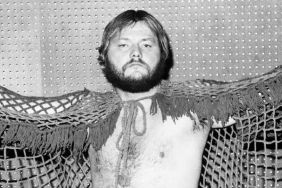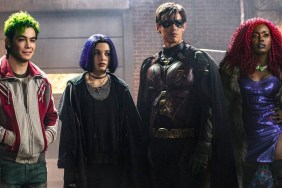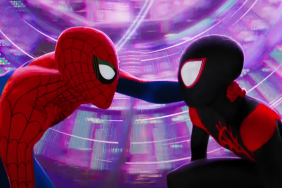Keanu Reeves as Fred/Bob Arctor
Rory Cochrane as Freck
Robert Downey Jr. as Barris
Woody Harrelson as Luckman
Winona Ryder as Donna
Jaki Davis as New Path Attendant
Jason Douglas as New Path Farm Manager
Chamblee Ferguson as Medical Technician #1
Heather Kafka as New Path Girl
Wilbur Penn as Medical Officer
Hugo Perez as New Path Staff Member #1
Leila Plummer as New Path Resident #2
Eliza Stevens as Daughter
Rommel Sulit as New Path Resident
Directed by Richard Linklater
Summary:
As might be expected from a cerebral tale combining the sensibilities of Richard Linklater and Philip K. Dick with cutting-edge animation, this is a truly mind-blowing experience.
Story:
Bob Arctor (Keanu Reeves) is an undercover drug enforcement officer assigned to spy on his friends, who are all addicted to the drug known as Substance-D. He soon finds himself addicted himself and getting deeper and deeper into a situation which he’s unable to understand or resolve.
Analysis:
Based on Philip K. Dick’s 1977 novel, this animated adaptation written and directed by Richard Linklater (“Before Sunset”) would seem like a match made in heaven. Even if it may throw fans of Linklater’s previous animated movie “Waking Life” for a loop, it’s exactly what anyone familiar with either groundbreaking iconoclast might expect.
Like much of Dick’s previous work, the story is set in the future, seven years in fact, where drug enforcement officers use high-tech means to fight their war on drugs. To keep their identities secret, even from each other, the agents wear “scramble suits” that randomly depict fragments of different people to mask their own identity and voices. One such officer, codenamed “Fred,” has been assigned to keep track of one Bob Arctor, thought to be high in the chain of those trafficking the deadly Substance D. Since Fred actually IS Bob Arctor, he’s put in a strange situation where he has to keep track of himself and his circle of junkie friends using a multi-camera surveillance system known as a “scanner.”
It’s amazing that Philip K. Dick had the vision to write a story like this about how drugs affect modern society, which still resonates over thirty years later, and there’s something to be said for how Linklater faithfully tries to capture the difficult nature of that work. If you’ve seen David Cronenberg’s adaptation of William S. Burroughs’ “Naked Lunch” or Jonas Akerlund’s 2002 drug movie “Spun,” you can get some idea of how trippy and cryptic this metaphysical journey into the surreal tends to get.
Opening with a scene of Rory Cochrane’s freakish Freck trying to rid his body of an infestation of imagined bugs–gotta love the effects of drugs!–you quickly get some idea what the collective of animators brought to the table using a system similar to Rotoscope, where they literally paint over digitally filmed sequences. The end results are quite amazing, like a living and breathing painted comic book, mixing two-dimensional objects with three-dimensional characters and settings to create a rich-textured world.
Most of the movie consists of scenes of Arctor and his friends hanging around his house talking about the world as seen through their drug-adled minds. Their conversations don’t really have much to do with the main story, but their discussions are as lively and entertaining whether they’re arguing the merits of a recently purchased bicycle or getting into a fistfight over trivialities. As one might expect from Linklater’s deftly-written dialogue, it never gets as dull as most talking heads movies tend to be.
Much of this can be credited to Robert Downey Jr., who steals every scene as Barris, a fast-talking huckster ready to narc on his friend Bob in hopes of hooking up with his “girlfriend” Donna, enacted by Winona Ryder. Woody Harrelson does his best to keep up with Downey, playing the Fric to Downey’s Frac in their esoteric arguments.
Keanu Reeves’ typically subdued performance almost seems necessary to keep things grounded in the scenes between the other two actors, though when he’s at the police station dealing with his superior or being tested by shrinks, things tend to slow down. Even so, the role of Arctor is perfectly suited towards Reeves’ niche for playing low-key characters caught up in extraordinary situations, and he’s good at imbibing the part with the paranoia of having to play both sides of the fence mixed with the frustration at dating a girl who won’t let him touch her because she’s too hopped up on drugs.
Often, you may find yourself wondering why Linklater bothered doing this movie using animation rather than just using the footage he shot of the actors performing on location. As great as the movie looks, the animation is never as deliberately flashy as “Waking Life.” It only seems to break away from what was filmed to show the scramble suits, which aren’t particularly impressive, or for Bob’s rare hallucinations. Despite the beauty of the animation, you rarely feel like you’re watching anything out of the ordinary that couldn’t have been done without it, but at least, the visuals (and the hip factor) are enhanced by a number of new ambient tracks by the one and only Radiohead.
By the end, you’re more likely to be scratching your head as Arctor’s hallucinations start to get out of control, making it impossible for him to do his job. Since much of the third act narrative seems to be taken directly from Dick’s original text, it’s even harder to figure out what is going on, and the ending is a bit of a downer, since many of the earlier subplots are left unresolved and unexplained. Still, none of that takes away from the dramatic message of the piece, which ultimately wins out.
The Bottom Line:
“A Scanner Darkly” is likely to divide people, even the more open-minded ones who normally appreciate Linklater’s talking heads style of filmmaking. Whether or not it had to be animated may be a question for the ages, but the animation adds another level to Linklater’s dialogue-heavy work. Mixing those sensibilities with Dick’s out-there ideas makes for an experience that’s not easily shaken.










